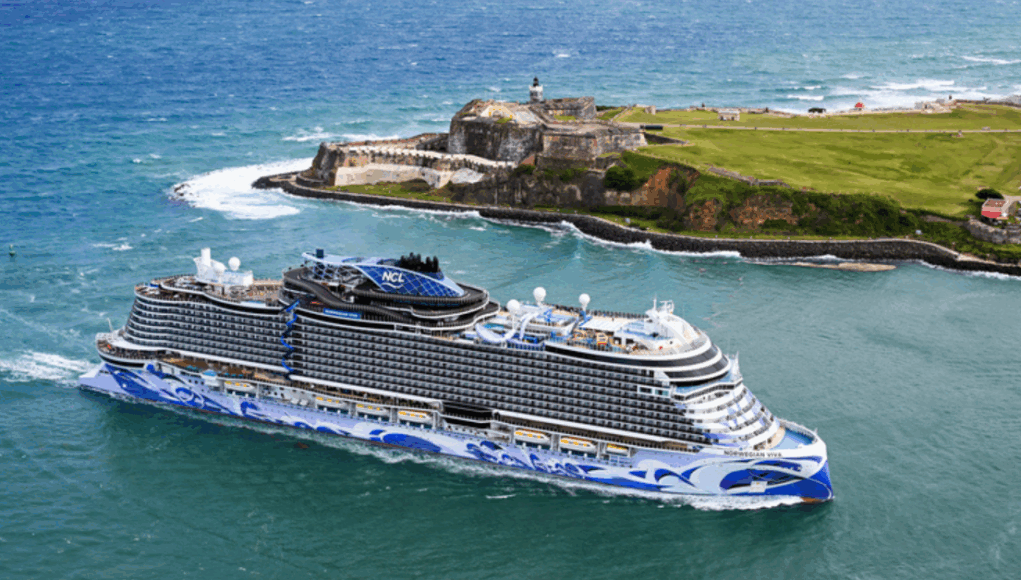Cruising offers a unique blend of adventure, relaxation, and exploration, making it an ideal choice for first-time travelers. Imagine waking up to a new destination each day, with the ocean breeze and stunning views right outside your window. However, for those new to cruising, the experience can be overwhelming. This guide aims to equip you with essential knowledge and tips to ensure your first cruise is smooth sailing. From choosing the right cruise line to packing essentials, this comprehensive guide covers everything you need to know to embark on your maiden voyage with confidence.
“The sea, once it casts its spell, holds one in its net of wonder forever.” – Jacques Cousteau
Table of Contents
- Choosing the Right Cruise Line
- Understanding Cruise Itineraries
- Packing Essentials for Your Cruise
- Onboard Experience: What to Expect
- Excursions and Shore Activities
- Budgeting for Your Cruise
- Frequently Asked Questions
Choosing the Right Cruise Line
The first step in planning a cruise is selecting the right cruise line. Different cruise lines cater to various demographics, budgets, and travel styles. For families, Disney Cruise Line offers themed experiences and activities for children. For luxury travelers, lines like Regent Seven Seas Cruises provide all-inclusive packages with fine dining and spacious accommodations. Budget-conscious travelers may prefer Carnival or Norwegian Cruise Line, which offer affordable options with plenty of onboard entertainment.
Consider the destinations you want to visit. For example, if the Caribbean is on your bucket list, lines like Royal Caribbean and Celebrity Cruises offer diverse itineraries. Researching reviews and itineraries can help narrow down your options. Prices for cruises can range from $300 to over $5,000 per person, depending on the cruise length, destination, and cabin type.
Understanding Cruise Itineraries
Once you’ve chosen a cruise line, it’s time to look at itineraries. Cruises can last anywhere from three days to several weeks, with destinations ranging from tropical paradises to historic cities. Shorter cruises often focus on a single region, such as the Bahamas, while longer cruises may visit multiple continents. Pay attention to port stops, as some itineraries may include popular destinations like Cozumel, Mexico, or Santorini, Greece.
When reviewing itineraries, consider how much time you’ll have in each port. Some cruises offer only a few hours, while others allow for overnight stays. This can significantly impact your ability to explore. Additionally, look for excursions offered by the cruise line, which can range from guided tours to adventurous activities like zip-lining or snorkeling. Prices for excursions typically range from $50 to $200 per person, depending on the activity.
Packing Essentials for Your Cruise
Packing for a cruise can be daunting, especially for first-timers. The key is to pack smart and be prepared for various activities. Start with essentials like swimwear, sunscreen, and comfortable walking shoes. Many cruise lines have formal dining nights, so including a cocktail dress or suit is advisable. Additionally, don’t forget a light jacket or sweater for cooler evenings on deck.
Consider the cruise line’s dress code, which can vary significantly. Some lines are more casual, while others may have strict formal nights. Always check the cruise line’s website for specific guidelines. Also, pack a small carry-on bag with essentials like medications, swimwear, and travel documents, as luggage may take time to arrive at your cabin.
Onboard Experience: What to Expect
One of the most exciting aspects of cruising is the onboard experience. Cruise ships are like floating cities, offering a plethora of activities and amenities. From pools and spas to theaters and casinos, there’s something for everyone. Most cruise lines provide a daily schedule of activities, including live performances, cooking classes, and fitness sessions.
Dining options are also abundant. Many ships feature multiple restaurants, ranging from casual buffets to upscale dining. Some cruise lines even offer specialty restaurants for an additional fee. It’s advisable to make reservations for these popular venues early in your cruise to ensure a spot. Expect to spend around $30 to $50 per person for specialty dining experiences.
Excursions and Shore Activities
While onboard activities are plentiful, exploring ports of call is a highlight of any cruise. Researching excursions ahead of time can enhance your experience. Cruise lines often offer organized excursions, which can be convenient but may come at a premium. Alternatively, consider exploring independently. Many ports have local tour guides or shuttle services that can provide a more personalized experience.
“A journey of a thousand miles begins with a single step.” – Lao Tzu
When planning excursions, factor in travel time to and from the port. Some popular activities include snorkeling in the Caribbean, exploring ancient ruins in Greece, or taking a scenic train ride in Alaska. Costs for independent excursions can vary widely, from $30 for a local bus tour to $200 for a guided adventure.
Budgeting for Your Cruise
Understanding the costs associated with cruising is crucial for first-time travelers. While the initial price of a cruise may seem reasonable, additional expenses can add up quickly. Beyond the cruise fare, consider costs for excursions, specialty dining, gratuities, and drinks. Many cruise lines charge for alcoholic beverages, while others offer drink packages ranging from $50 to $100 per person for unlimited beverages.
Gratuities are another consideration. Most cruise lines automatically add a daily gratuity fee, typically around $15 per person per day. It’s advisable to budget an additional $200 to $400 for a week-long cruise to cover these extra expenses. Planning ahead can help avoid surprises and ensure a stress-free experience.
References
- Cruise Line International Association (CLIA): https://www.cruising.org/
- “The Complete Guide to Cruising” by Anne Campbell, 2023.
Frequently Asked Questions
- What’s the best time of year to take a cruise?
- The best time to cruise largely depends on the destination. For Caribbean cruises, the peak season is from December to April, when the weather is warm and dry. However, this is also when prices are highest. For Alaska, the summer months of May through September are ideal, while Mediterranean cruises are best from late spring to early fall. Consider shoulder seasons for better deals and fewer crowds.
- How much should I budget for my cruise?
- Budgeting for a cruise involves more than just the fare. On average, travelers should expect to spend around $100 to $150 per day per person, which includes meals, activities, and gratuities. For a week-long cruise, this amounts to approximately $700 to $1,050. Additionally, factor in costs for excursions, drinks, and souvenirs, which can add another $300 to $500 to your overall budget.
- What should I pack for my first cruise?
- Pack essentials such as swimwear, sunscreen, comfortable shoes, and evening attire for formal nights. Don’t forget a light jacket for cooler evenings and any medications you may need. A small carry-on bag with travel documents, swimwear, and essentials is also recommended for easy access upon boarding.
- Are cruises safe for first-time travelers?
- Yes, cruises are generally safe for travelers. Cruise lines prioritize passenger safety with strict health protocols and security measures. However, it’s essential to stay aware of your surroundings and follow safety guidelines provided by the cruise staff. Additionally, consider travel insurance for added peace of mind.
- How do I get to the cruise port?
- Transportation to the cruise port can vary based on your location. Many travelers opt for flights to nearby airports, followed by shuttle services or taxis to the port. Some cruise lines offer transportation packages, which can simplify the process. It’s advisable to arrive at least a day before departure to avoid any last-minute issues.
- What are the local customs I should be aware of?
- Each destination has its own customs and etiquette. Research local customs for each port of call, especially regarding dress codes at religious sites or cultural norms. Being respectful of local traditions can enhance your experience and foster positive interactions with locals.
- Any insider tips for first-time cruisers?
- Book excursions early to secure your spot, especially for popular activities. Consider purchasing a drink package if you plan to enjoy alcoholic beverages, as this can save money. Finally, take advantage of onboard activities and events to make the most of your cruise experience.


















